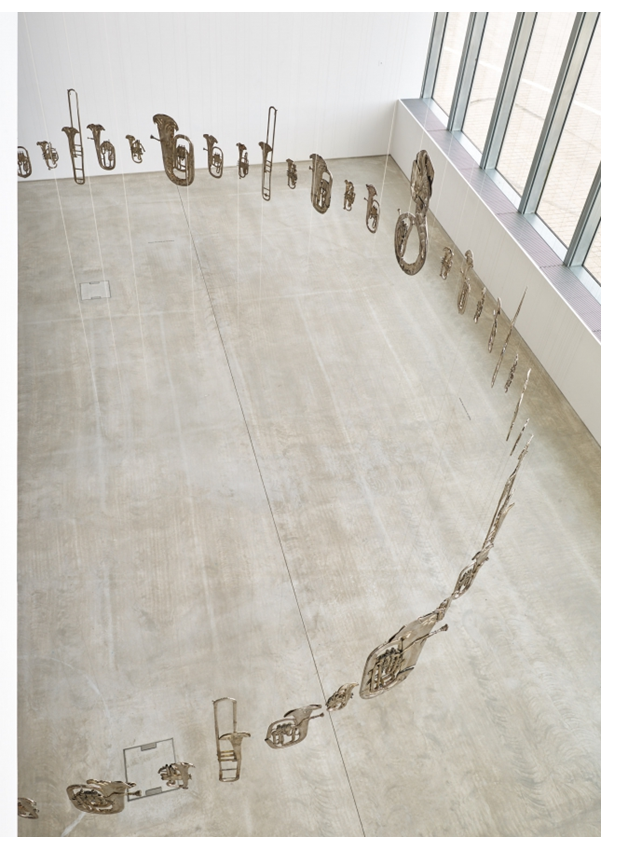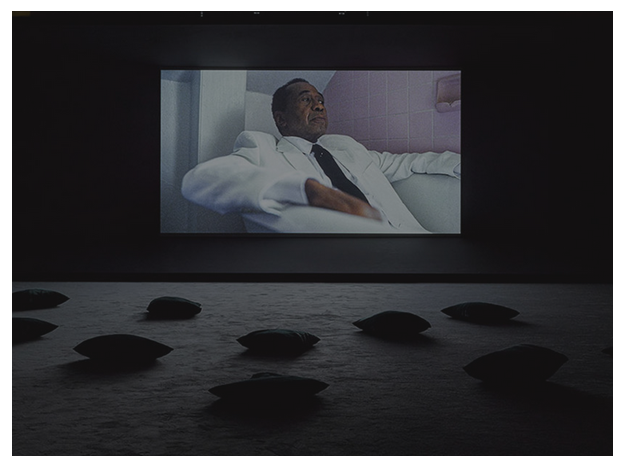WORDS BY GRANT ALIFFE
Now the weather has taken a decidely turn for the worse, but is still crisp, bright and clear, take yourself out next weekend and experience something a little cultured. There are some great exhibitions on at the moment so we’re taken the pressure off you and below is a round up of some of the best and most interesting;
 Perched on the edge of the sea, the Turner Contemporary Gallery is a crisp geometric foil to the changing sea scape and Victorian architecture of Margate; with its grey blue façade the gallery, designed by David Chipperfield Architects, fades and blends into the changing Kent sky. Until the 7th April the Turner Contemporary is showing ‘Perpetual Canon’, an installation by the Turner Prize nominee Cornelia Parker. The gallery has several spaces, ‘Perpetual Canon’ is being shown in the Sunley Gallery, the first space you encounter that looks directly out to the North Sea, (look out for Antony Gormley’s sculpture ‘Another Time’ appearing in the distant, from beneath the waves).
Perched on the edge of the sea, the Turner Contemporary Gallery is a crisp geometric foil to the changing sea scape and Victorian architecture of Margate; with its grey blue façade the gallery, designed by David Chipperfield Architects, fades and blends into the changing Kent sky. Until the 7th April the Turner Contemporary is showing ‘Perpetual Canon’, an installation by the Turner Prize nominee Cornelia Parker. The gallery has several spaces, ‘Perpetual Canon’ is being shown in the Sunley Gallery, the first space you encounter that looks directly out to the North Sea, (look out for Antony Gormley’s sculpture ‘Another Time’ appearing in the distant, from beneath the waves).
Parker’s oeuvre is eclectic, truly multidisciplinary and collaborative, from large scale installations to delicate emotive objects, works are bound together through a collective sense of place. Her best known work is ‘Cold Dark Matter’, an installation that captures a frozen moment. Parker invited the British army to exploded a shed, she collected all the resulting shards and recreated the moment of the blast; precisely suspending all the fragments around a single light bulb, halting their travel of trajectory. ‘Perpetual Canon’ was first created in 2004 and consists of 60 disused brass band instruments. These instruments have undergone a similar violent transformation having been squashed flat in a 230 tonne press. Similar to ‘Cold Dark Matter’, the instruments are suspended, however the arrangement in ‘Perpetual Canon’ isn’t the freezing of chaos but the controlled positioning of repetitive form, referencing the musical canon, each deformed instrument suspended in a perfect circle, no beginning no end, each following the previous.
Parkers work is concerned with ‘matter’ her works explore the regeneration and resurrection of objects from their original form into a new narrative, disused and rejected items are imbued with new conversations that remain steeped in historical context. For Parker this transformation often begins with a violent act. In many works including ‘Perpetual Canon’ this ferocity is celebrated through exploding, pressing, extruding and crushing – ‘Thirty Pieces of Silver’ (1989) involved Parker steam rolling 1000 silver objects and hovering their ghostly forms 30 cm from the floor on invisible wires. Other works begin with more subtle form of violence, removing a feather from Freud’s couch, casting the cracks in a pavement or extracting her own blood to create geometric drawings – Self-Portrait series 2015.
Any transformative process is somehow a calculating balance of displacement, of destruction and rebirth, Parkers work turns these violent acts against matter into still, beautiful anti-matter. ‘Perpetual Canon’ is quite cacophony, a fitting transformation for brass instruments that once played in perfect vociferous melody.
Turner Contemporary Gallery, Rendezvous, Margate CT9 1HG
 180 the Strand has been converted into a labyrinth of narrow corridors that disorientate as you navigate your way through room after room of video and film installations. ‘Strange Days, memories of the future’ is on until 9th December and explores the relationship that memory, emotion and sound have to visons of the future. You need to leave plenty of time to explore all that this exhibition has to offer. Prepare to be confronted with contorted visceral images, polyphonic sound installation, and video that demands you relinquish your personal space. You will be invited to view installations lying down, in intimate tight spaces and in vast cavernous dimly lit underground rooms.
180 the Strand has been converted into a labyrinth of narrow corridors that disorientate as you navigate your way through room after room of video and film installations. ‘Strange Days, memories of the future’ is on until 9th December and explores the relationship that memory, emotion and sound have to visons of the future. You need to leave plenty of time to explore all that this exhibition has to offer. Prepare to be confronted with contorted visceral images, polyphonic sound installation, and video that demands you relinquish your personal space. You will be invited to view installations lying down, in intimate tight spaces and in vast cavernous dimly lit underground rooms.
As well as a collective commentary on the future, the 21 independent artists have all shown work at the New Museum in New York which promotes work by living contemporary artists. Look out for the use of machines and robotics in the dystopian installation, ‘Soft Materials’ by Daria Martin and the quiet work by Klara Liden, ‘The Myth of Progress’, which you approach by walking down a wide corridor to find a video of a figure moonwalking. You are left wondering if you are travelling towards where they have already been; a fitting question for an exhibition that disorientates, ensuring that the future is uncomfortable and immersive in equal measure.
 Hauser and Wirth’s Somerset galleries sit just outside the town of Bruton. Its marriage of collaborative architecture including renovated rural farm buildings and contemporary additions by Argentinean architect Luis Laplace, conceal a continuously changing calendar of exhibitions from international artists. Showing until 1st January is an extraordinary solo show entitled Stages & Tales by the Belgian artist Berlinde De Bruyckere.
Hauser and Wirth’s Somerset galleries sit just outside the town of Bruton. Its marriage of collaborative architecture including renovated rural farm buildings and contemporary additions by Argentinean architect Luis Laplace, conceal a continuously changing calendar of exhibitions from international artists. Showing until 1st January is an extraordinary solo show entitled Stages & Tales by the Belgian artist Berlinde De Bruyckere.
De Bruyckere’s work explores our relationship with mortality and transformation over time, her work has been figurative in the past but this exhibition is firmly planted in abstraction. The exhibition shows two new works, ‘Courtyard Tales’ uses layers of decomposed blankets and ‘Anderlecht’ uses vertically stacked waxed casts of animal hides. Both of these objects, blankets and hides, have featured in De Bruyckere before but here they take on an ethereal quality.
The blankets of ‘Courtyard Tales’ hang off the wall, draped over each other they bulge as if to conceal or protect an inner secret. Blankets are intimate objects used to protect us and conceal us, they are present at our birth and our death; they represent and expose human venerability’s. De Bruyckere uses blankets that she has decomposed over time, exposed to the outside elements they fracture and discolour, transforming them into fragile and delicate objects. When layered over each other these fissures, or ‘wounds’, expose faded colours and patterns from the blankets beneath.
The strata of hides that form the second body of work, ‘Anderlecht’, seem at first to consist of grey animal hides with flashes of pink fat and the blue bruising of decomposition, hair and dirt and traces of salt from tanning. On closer inspection you realise that these stacks are wax casts of hides that capture a frozen moment of transformation. These cube like stacks, resting on bronze casts of wooden pallets, then begin to look like used folded felt blankets and the layered blankets of ‘Courtyard Tales’ begin to take on the shape of drying animal hides. De Bruyckere weaves a narrative of fragility in Stages and Tales, and exposes us to the reality of death and our slow transformation to its inevitability. This moribund dialogue is beautiful in its detail, through the subtle fading hues of decomposition and the light malleable properties of fabric and wax.
Hauser & Wirth, Durslade Farm, Dropping Lane, Bruton, Somerset. BA10 0NL